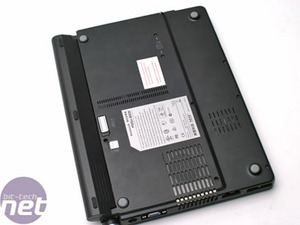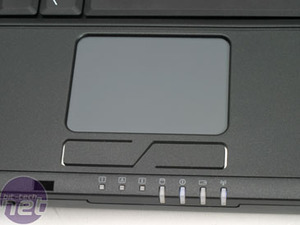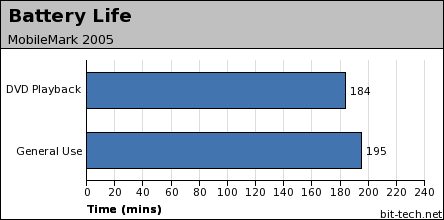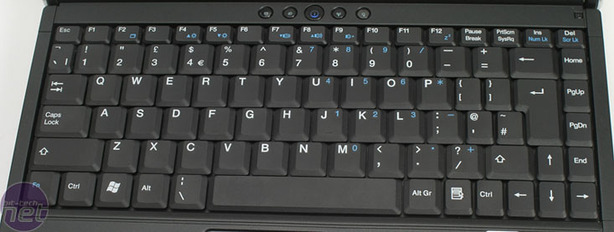Using the S271:
I've used the S271 for quite a few weeks now and it's generally very similar to using the S2xx series notebook if you've ever seen or used one in the past. The CPU fan is located under the arrow keys - it pulls air in through the bottom of the chassis and exhausts it out of the side. It's something worth taking into account when using the notebook on your lap, because the S271 gets quite hot if you're not careful. If you just use the your laptop on a solid surface, this shouldn't come as too much of a problem.There are another two vented areas on the bottom of the chassis: one is for the ATI northbridge that comes with an Integrated Graphics chip - this can get quite hot when you're gaming; the final vented area doesn't appear to be close to any of the major components, but it isn't obtrusive and more ventillation is generally better in an ultra-portable notebook.


The touch pad and buttons are a massive improvement over the ones on my S250 - the touch pad is set deeper down into the top of the S271's chassis, meaning that it is harder to catch when you're typing fast - this is a problem that I've had with the S250, and it's something that I still find myself doing today. The buttons are soft and positive, unlike the buttons on the S250, which have always felt like they need quite a lot of pressure to ensure that your button pushes are recognised.
The Screen: I've used the screen in many scenarios over the last few weeks and generally speaking it isn't bad. Along with our general use period, we looked at a number of high quality 8MP images direct from a Canon 1D Mk. II - every image looked clear with good contrasting colours. There were no areas where the screen really performed poorly in this aspect - detail in darker areas was well-defined, and there was no loss of detail at the high end of the spectrum, too.
We also watched various video streams and DVDs in both high definition and standard definition. The screen performed well, delivering a very vibrant experience. The colours looked pretty good and the screen was capable of displaying the detail in dark areas at the same time as displaying detail in much brighter areas. This is thanks to the high contrast screen that MSI has chosen to use.
Other Functions: Wireless networking is improved on this notebook too - when rebooting, the S271 remembers your previous wireless setting so that there is no need to enable it every time you reboot or come out of standby/hibernate. Sound quality through the speakers under the screen is about as good as can be expected from small integrated speaker solutions. They sound tinny and underwhelming, but I've never really found myself using a laptop like this for media playback without headphones. Speaking of which, both MP3s and DVD sound tracks sounded fine through a pair of Sennheiser HD215 headphones.
Battery Life:
We used the DVD Playback and General Use scenarios in MobileMark 2005 to measure the MSI Megabook S271s battery life performance using the 8-cell battery we were supplied with. For these tests, we set the brightness half way along MSI's scale - we deemed this to be an acceptable level of brightness. Of course, the brightness can be set lower to improve battery life, but we found that the screen was hard to read in some scenarios. We also turned off all power saving options in Windows to ensure that the computer didn't shut down during the tests.

MSI MPG Velox 100R Chassis Review
October 14 2021 | 15:04










Want to comment? Please log in.